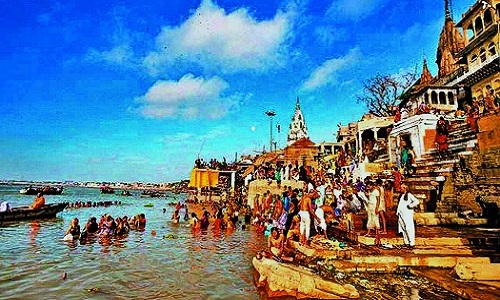India’s Namami Gange mission gets UN recognition
15 Dec 2022 09:45:47

By Shakoor Rather
MONTREAL,
AN AMBITIOUS project that aims to improve the health of India’s holy river Ganga is among 10 “ground-breaking” efforts recognised from around the globe by the United Nations for their role in restoring the natural world. According to a report unveiled during the UN Biodiversity Conference (COP15) here on Tuesday, climate change, population growth, industrialisation and irrigation have degraded the Ganga along its arcing 2,525-kilometre course from the Himalayas to the Bay of Bengal. On the Ganga River Rejuvenation project, the UN noted that it was launched in 2014.
The Government-led ‘Namami Gange’ initiative is rejuvenating, protecting and conserving the Ganga and its tributaries, reforesting parts of the Ganga basin and promoting sustainable farming, according to the statement.
The project also aims to revive key wildlife species, including river dolphins, softshell turtles, otters, and the hilsa shad fish. Restoring the health of the Ganga is the focus of a major push to cut pollution, rebuild forest cover and bring a wide range of benefits to the 520 million people living around its vast basin. The initiatives were declared World Restoration Flagships and are eligible to receive UN-backed promotion, advice or funding.
They were selected under the banner of the United Nations Decade on Ecosystem Restoration, a global movement coordinated by the UN Environment Programme (UNEP) and the UN Food and Agriculture Organisation (FAO).
It is designed to prevent and reverse the degradation of natural spaces across the planet, the UN said. Together, the 10 flagships aim to restore more than 68 million hectares — an area bigger than Myanmar, France or Somalia — and create nearly 15 million jobs, the UN said.
“Transforming our relationship with nature is the key to reversing the triple planetary crisis of climate change, nature and biodiversity loss, pollution and waste,” said UNEP Executive Director Inger Andersen.
“These 10 inaugural World Restoration Flagships show that with political will, science and collaboration across borders, we can achieve the goals of the UN Decade of Ecosystem Restoration and forge a more sustainable future not only for the planet but also for those of us who call it home,” Andersen said here. The Namami Gange initiative, with an investment of up to USD 4.25 billion so far, has the involvement of 230 organisations, with 1,500 km of river restored to date. Additionally, there have been 30,000 hectares of afforestation so far, with a 2030 goal of 1,34,000 hectares, according to the UN. The other inaugural World Restoration Flagships include the Trinational Atlantic Forest Pact, which aims to protect and restore the forest in Brazil, Paraguay and Argentina, and the Abu Dhabi Marine Restoration project which is safeguarding the world’s second-largest dugong population in Abu Dhabi. The Great Green Wall for Restoration and Peace initiative to restore savannas, grasslands and farmlands across Africa, the Multi-Country Mountain Initiative based in Serbia, Kyrgyzstan, Uganda and Rwanda, and the Small Island Developing States Restoration Drive focused on three small island developing states – Vanuatu, St Lucia and Comoros were also recognised.
The Altyn Dala Conservation Initiative in Kazakhstan to restore the steppe, semi-desert and desert ecosystems, the Central American Dry Corridor, and Shan-Shui Initiative in China were the other projects on the list.